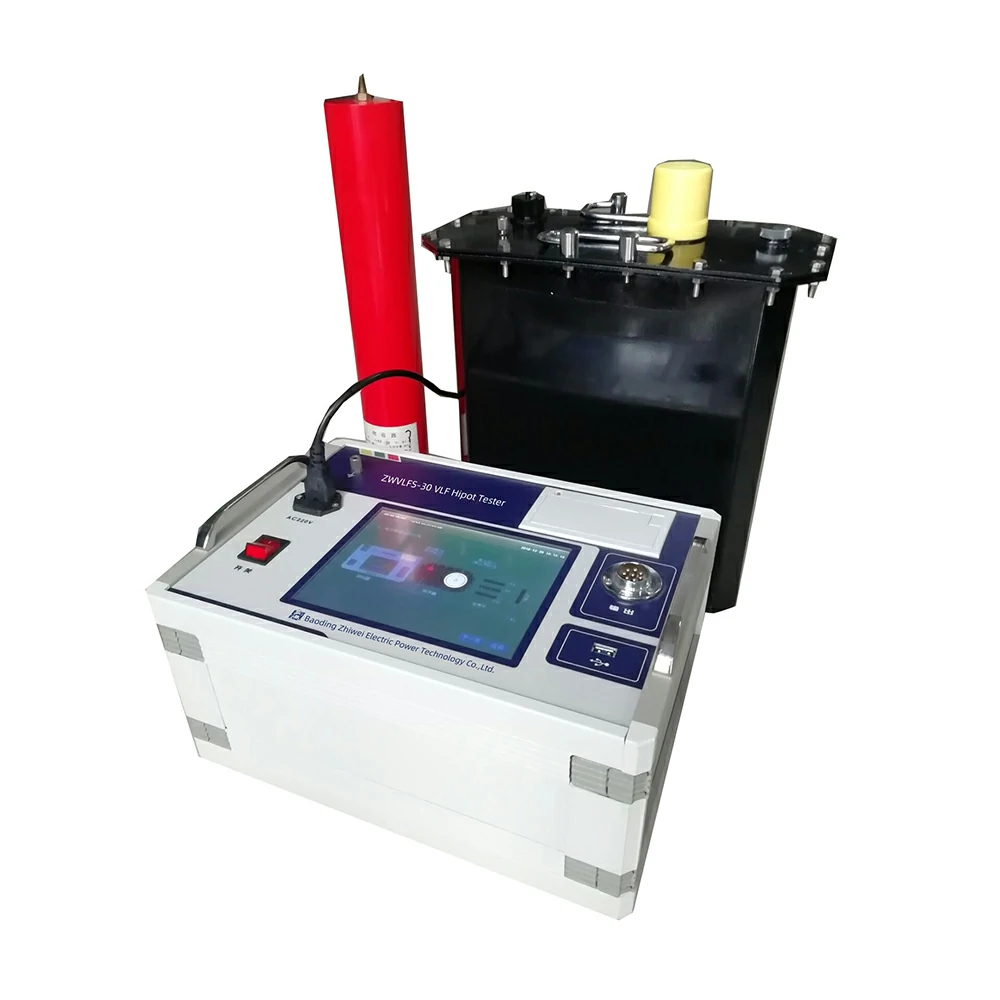What are the primary failure modes detected by high voltage vlf testing of power cables?
Very Low Frequency (VLF) testing of power cables is a widely used diagnostic technique for assessing the insulation integrity and detecting potential failure modes.
Some primary failure modes detected by VLF testing of power cables include:
- Partial Discharge (PD): VLF testing can detect partial discharge activity within the cable insulation. PD occurs when localized breakdown or deterioration of insulation generates small discharges of electrical energy. VLF testing can identify areas of increased PD activity, indicating potential weaknesses or defects in the insulation.
- Water Trees: Water trees are microscopic defects that form within the cable insulation due to the presence of moisture and electrical stress. VLF testing can reveal the presence of water trees by inducing electrical stress on the insulation and detecting variations in the insulation response, such as increased leakage current or partial discharge activity.
- Void Detection: Voids or air pockets within the cable insulation can compromise its dielectric strength and increase the risk of breakdown. VLF testing can identify areas of reduced capacitance or increased electrical stress, which may indicate the presence of voids or air gaps in the insulation.
- Degraded Insulation: VLF testing can detect overall degradation or aging of the cable insulation, which may result from factors such as thermal stress, mechanical damage, or exposure to environmental contaminants. high voltage vlf testing of power cables Changes in insulation resistance, capacitance, or dissipation factor measured during VLF testing may indicate degradation of the insulation material.
- Cable Joints and Terminations: VLF testing can assess the condition of cable joints and terminations, which are common locations for insulation defects and failures. By applying VLF voltage stress to the joints and terminations, potential weaknesses such as voids, contamination, or improper installation can be identified.
- Cable Sheath Integrity: VLF testing can also evaluate the integrity of the cable sheath or jacket, which provides mechanical protection and electrical shielding for the insulation. Damage or degradation of the sheath, such as cuts, abrasions, or corrosion, can be detected through variations in leakage current or partial discharge activity during VLF testing.
- Electrical Trees: Electrical trees are branching channels of degradation that form within the cable insulation due to localized electrical stress. VLF testing can detect the presence of electrical trees by inducing voltage stress on the insulation and observing changes in insulation response, such as partial discharge activity or breakdown voltage.
Overall, VLF testing of power cables is a valuable diagnostic tool for identifying various failure modes and assessing the overall condition of cable insulation, joints, terminations, and sheath. By detecting potential defects and weaknesses early, VLF testing helps prevent unexpected cable failures and ensures the reliability of electrical power systems.
